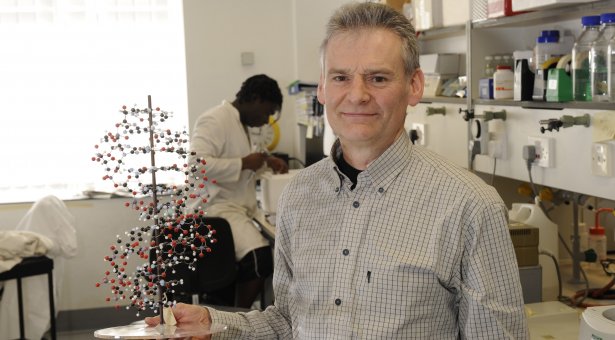Memory bank for forgotten antibiotics launched

A drug discovery tool, the first of its kind, is launched today in a fresh bid to revitalise the urgent search for new antibiotics.
The free, open-access, searchable database brings together many once-promising leads from the past 50 years which have for various reasons stalled or been dropped.
The team behind AntibioticDB led by Professor Laura Piddock (University of Birmingham) and including scientists from the John Innes Centre, argue that previously discontinued agents are an untapped resource that have been overlooked by drug-development companies.
They say the current state of antibiotic discovery, research and development is insufficient to respond to the urgent need for treatments of drug-resistant bacterial infections.
The result is an online memory bank of forgotten antibiotics created by the research team in the hope this will inspire the lifesaving drugs of tomorrow.
“We wanted to establish the current status of the drug-discovery pipeline in antibiotic development – particularly to look at compounds that might have been dropped in the past to see if they could be resuscitated.” says one of the authors of the study Professor Tony Maxwell of the John Innes Centre
“The study establishes a readily usable database of antibiotics that can be accessed for free by anybody; we hope this will help both academia and commercial companies with their drug-discovery efforts,” he adds.
In addition to discontinued compounds – some of them dating back to the 1960s – the database includes data on discovery, research and clinical trials and compounds awaiting approval.
The research team used a range of sources to identify compounds of interest, including key opinion leaders in the pharmaceutical industry and leading agencies in this research area.
Information on each compound or drug was obtained using online searches, literature archives and interviewing prominent experts. Further information such as reasons for the lack of development is also included.
The study highlights examples from the past where drugs have been dropped on safety grounds, only to be re-introduced successfully years later after new research showed them to be safe at different dosages.
While other pay-per-view resources exist for researchers, AntibioticDB is the first free database designed to appeal to small and medium-sized enterprises or academia.
In 2009 the World Health Organisation declared antimicrobial resistance one of the biggest threats to human health, which if not addressed with the introduction of new effective antibiotics, could by 2050 kill more people than cancer or road traffic accidents.
But efforts to address this remain insufficient, says the study, due to barriers of cost and time.
Lead author Professor Laura Piddock, of the University of Birmingham’s Institute of Microbiology and Infection, said: “It can take up to 15 years and cost up to $5 billion from the discovery of a compound to progress through pre-clinical and clinical development before a medicine can be licensed and then marketed.
“There is no doubt that the antibiotic pipeline needs revitalization; however, the answer may be not only the development of new drugs, but also re-investigating compounds previously discontinued.”
Rebecca Lo, a post-graduate researcher from the University of East Anglia who carried out work on the project while she was an intern at the John Innes Centre said:
“It would be fantastic if the database could stimulate new initiatives to investigate forgotten antibiotics.”
- The full findings can be found in the Journal of Antimicrobial Chemotherapy paper: Revitalising the drug pipeline: AntibioticDB, an open access database to aid antibacterial research and development
